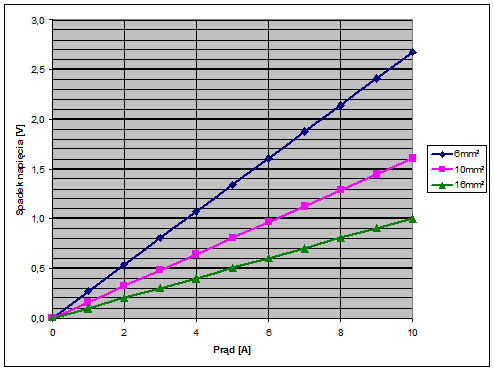FAQ
TL;DR: A 6 mm² copper pair loses about 1.2-1.5 V (≈5 %) at 5 A over 45 m; “Exactly 5 times bigger” at 25 A [Elektroda, korrus666, post #12050007][Elektroda, wieswas, post #12050325]
Why it matters: Every volt you drop is energy you can’t store.
Quick Facts
• 45 m ➜ 1.2-1.5 V drop at 5 A on 6 mm² Cu [Elektroda, korrus666, post #12050007]
• 25 A ➜ 6 V drop, 150 W lost (≈17 % of 880 W) [Elektroda, wieswas, post #12050325]
• 4 mm² loop, 80 m, 5 A = 0.79 % loss [Elektroda, CzystyZYSK, post #13454925]
• Solar cable insulation: 1 kV, UV-rated; speaker cable lacks both [Elektroda, CzystyZYSK, post #12775849]
• AL 4×16 mm² paralleled ≈ Cu 2×32 mm² at lower cost [Elektroda, putas, post #12692706]
How do I estimate voltage drop for a DC solar run?
Multiply loop length (out + back) by cable resistance per metre, then by current. Example: 90 m of 6 mm² copper ≈0.017 Ω; at 5 A the drop is 0.085 V. Most users simplify with online calculators [kriss032 link, #13682747].
What drop should I expect on 45 m of 6 mm² at 5 A and 25 A?
Forum tests show 1.2-1.5 V at 5 A [Elektroda, korrus666, post #12050007] and 6 V at 25 A [Elektroda, wieswas, post #12050325]
Will a 6 V loss stop a 24 V battery bank from charging?
No. Four panels supply 35 V MPP; even minus 6 V leaves 29 V, enough for a 24 V bank [Elektroda, motabaRESMAR, post #12050336]
How much power is wasted along the wire at 25 A?
P = V×I → 6 V×25 A = 150 W, about 17 % of a 880 W array [Elektroda, wieswas, post #12051110]
What’s the quickest way to cut cable losses?
Run modules in series to raise string voltage and cut current. Doubling voltage quarters I²R losses. "Check your controller’s max 100 V rating first" [Elektroda, lukaz, post #12778878]
Are aluminum ground cables a safe alternative?
Yes, if you size them correctly and use appropriate terminations. Paralleling AL 4×16 mm² halves losses at modest cost [Elektroda, putas, post #12692706]
Can I use speaker cable outdoors for PV?
It works electrically but lacks 1 kV, UV and high-temperature insulation. Expect cracked jackets within a few seasons [Elektroda, CzystyZYSK, post #12775849]
Does the positive conductor really heat more than the negative?
Physics says both carry equal current, so temperatures match. Any difference signals a fault, not DC direction [Elektroda, retrofood, post #13202527]
How thick should the wire be for 80 m at 260 V and 5 A?
A 4 mm² copper loop gives only 0.79 % drop; 2.5 mm² rises to 1.19 % [Elektroda, CzystyZYSK, post #13454925]
Edge case: What happens if insulation fails under UV?
Outer sheath can crack, water enters, conductors corrode, and voltage arcs to frame—common cause of rooftop fires [IEC 62446-1].
3-step: How do I measure actual drop on site?
- Read battery voltage at the regulator.
- At the same moment, measure PV voltage at panel terminals.
- Subtract; divide by current to confirm resistance. A >10 % error means undersized wire.



